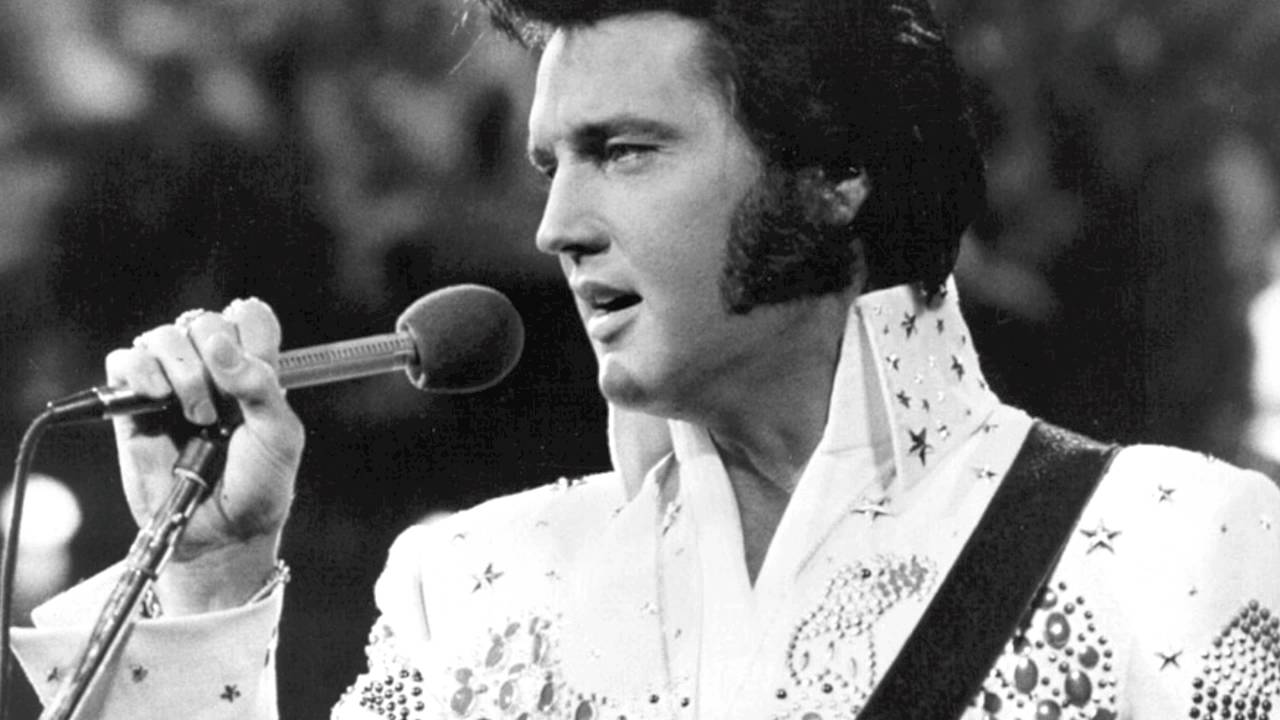
August 16: the day the door closes, yet the music keeps unlocking us.
Every August 16—the day Elvis Presley left this world—I lower the needle on “Jailhouse Rock” and the room instantly turns into a small, unruly stage. In the autumn of 1957 the single, cut for the companion Jailhouse Rock film/EP, shot to No. 1 in the United States and the United Kingdom, a victory that felt less like chart movement than cultural tectonics. The number is compact—two minutes and change—but it contains an origin story: the moment Elvis Presley fused danger to delight and made rock ’n’ roll feel not only possible, but inevitable.
The record’s architecture is spare and explosive. Jerry Leiber and Mike Stoller deliver a lyric that winks while it growls; D.J. Fontana’s snare slams like a cell door; Scotty Moore’s guitar slices the air; The Jordanaires grease the hinges. Over that voltage, Elvis Presley doesn’t merely sing—he detonates syllables. He spits, laughs, purrs, and shouts in quick succession, the voice acting out a jailbreak of the body. Each line seems to kick another chair from beneath propriety, and yet the performance never loses its grin. “Jailhouse Rock” is that rare record where rebellion arrives dressed as a party and everyone gets the joke.
On screen, the song becomes a manifesto in motion. The title sequence of Jailhouse Rock—all stark risers and shadowed walls—catches Elvis Presley dancing the way rhythm actually feels: knees cocked, shoulders snapping time, the torso half-cat, half-cadence. It’s choreography, yes, but it reads like authorship. The camera doesn’t follow a routine; it follows a will. Decades before the term “music video” settled in, this was the blueprint: a star, a beat, a bare set, and the idea that presence alone can redraw the room’s dimensions.
Listen closely and the lyric’s carnival of characters—Shifty Henry, The Purple Gang—turns from novelty into metaphor. “Jailhouse Rock” suggests that even behind bars we carry a key: rhythm. In Elvis Presley’s mouth, the punch lines are also principles. The track argues that freedom is an action—felt first in the hips, then in the mind—and that the shortest distance between confinement and release is a backbeat you can trust.
And yet this day, August 16, changes the timbre. Memory adds a minor chord. We know where the story bends: to the 1970s, to a body bearing the miles, to the ritual where Elvis Presley closed his shows with “Can’t Help Falling in Love,” a benediction after the riot. The arc from “Jailhouse Rock” to “Can’t Help Falling in Love” is the whole biography in miniature—the jailbreak and the prayer, the spark and the soft light. In Indianapolis, on that final June night of 1977, he still could summon the crackle of the old hit before sending the crowd home with grace.
So on this anniversary, I hear “Jailhouse Rock” differently. The clatter is a summons; the laughter in the vocal is a flare across time. We press play to feel the first rush again, but we also press play to keep a promise—to meet Elvis Presley not just at the end, but at the beginning, when the bars were still rattling and the world had not yet learned his exit line. The house lights may rise; the voice on the PA may declare that he has left the building. But today, the beat keeps working the lock. “Jailhouse Rock” still swings the door open, and for a few ecstatic minutes—on the very day we remember losing him—Elvis Presley steps through, grinning, and sets us gloriously free.